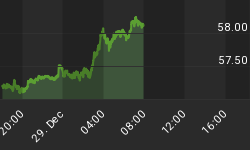For weeks now, I have been using phrases in these weekly articles on sentiment like "the best, most accelerated gains are behind us" and "we are closer to the end then the beginning". When we look at the charts, the SP500 has been essentially flat for the past 8 weeks, so every now and then, I guess I can get it right. If you have been a buyer over this time period, you most likely will find your investment underwater. In other words, there are a lot of investors who have bought high with the expectation of selling higher and who have bought the Wall Street nonsense that this is an investing opportunity of a lifetime. NOT! The "dumb money" indicator has dropped below the upper trading band (see figure 1, green arrow), and the best time to sell is usually 1 week after this signal. There are other scenarios that could develop, such as the emergence of the dip buyers leading to excessive speculation, but the most likely scenario and until further notice, I would be a seller at higher prices. The gas appears to be coming out of this market.
As the current market environment has been compared to 2011, it is noteworthy that last year's sell signal occurred on March 11. 7 weeks later the market made a marginal new high in another flurry of speculation. It took the market another quarter before it actually cratered sustaining a 20% loss over 4 weeks. In general, the next best buy signal will occur when investor sentiment turns bearish.
The "Dumb Money" indicator (see figure 1) looks for extremes in the data from 4 different groups of investors who historically have been wrong on the market: 1) Investors Intelligence; 2) MarketVane; 3) American Association of Individual Investors; and 4) the put call ratio. This indicator is now neutral. The data shows that the optimal sign to sell is 1 week after the indicator crosses below the upper trading band. But these are optimal scenarios, and I should caution that optimal and stock market are rarely spoken of in the same sentence. The market is just too unpredictable. Who saw the May, 2010 "flash crash" or the 20% drop over 3 weeks in 2011 coming? If you hang around too long, you could be one of those casualties. Alas, there are no right answers or guarantees. These are just signposts that help us better understand the price action.
Figure 1. "Dumb Money"/ weekly
Figure 2 is a weekly chart of the SP500 with the InsiderScore "entire market" value in the lower panel. From the InsiderScore weekly report: "Insider trading activity across the market was very limited last week as most companies have closed trading windows for insiders until after their Q1'12 earnings announcement. Trading volume will remain very light for the next two weeks and will increase as earnings season kicks into gear."
Figure 2. InsiderScore "Entire Market" value/ weekly
Figure 3 is a weekly chart of the SP500. The indicator in the lower panel measures all the assets in the Rydex bullish oriented equity funds divided by the sum of assets in the bullish oriented equity funds plus the assets in the bearish oriented equity funds. When the indicator is green, the value is low and there is fear in the market; this is where market bottoms are forged. When the indicator is red, there is complacency in the market. There are too many bulls and this is when market advances stall. Currently, the value of the indicator is 66.19%. This is the second week in a row that the indicator has turned down week over week. Values less than 50% are associated with market bottoms. Values greater than 58% are associated with market tops. It should be noted that the market topped out in 2011 with this indicator between 70% and 71%.
Figure 3. Rydex Total Bull v. Total Bear/ weekly
TheTechnicalTake offers a FREE e-newsletter: HERE
















